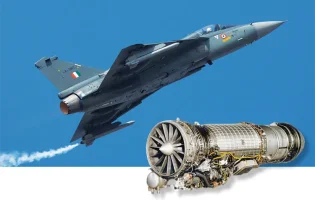- Views: 3K
- Replies: 11

SInce its debut on 27th february, debate surrounding the indigenous Tejas Mk-1A fighter jet and its ability to compete with the Pakistani Air Force's (PAF) fighter jets, particularly the F-16, has been a subject of ongoing discussion.
This article aims to delve into the Tejas Mk-1A's capabilities, dispel misconceptions, and highlight its crucial role within the Indian Air Force (IAF).
Addressing the Misconceptions
A common misconception is that the Tejas Mk-1A is solely designed to counter older F-16 models in the PAF's fleet. However, the IAF's vision for the Tejas Mk-1A extends far beyond this limited scope.The fighter jet is intended to be a versatile asset capable of engaging a wide range of modern threats, including newer F-16 variants, the JF-17, and the J-10CE.
The narrative that the Tejas Mk-1A isn't tailored for specific opponents underestimates its true potential. In real-world combat scenarios, adaptability and readiness are paramount.
The Tejas Mk-1A, equipped with advanced avionics, the Astra Mk1 missile, and a capable radar, presents a formidable challenge to adversaries.
Furthermore, pilot skill, tactical acumen, and situational awareness – factors often overlooked in simplistic comparisons – play a pivotal role in air combat outcomes.
Beyond Specifications: The IAF's Approach
Air superiority isn't solely determined by raw specifications on paper. The IAF recognizes this and has implemented a comprehensive training program to ensure its pilots are prepared for diverse aerial combat scenarios.The Dissimilar Air Combat Training (DACT) program exposes Tejas pilots to a variety of potential adversaries, including F-16s encountered during international exercises. This rigorous training regimen allows pilots to hone their skills and maximize the Tejas Mk-1A's capabilities in a realistic setting.
Adaptability and Evolution
Combat experiences offer valuable insights for improvement. A recent incident involving the PAF's use of electronic warfare (EW) jamming highlighted a communication vulnerability, which the IAF is actively addressing through upgrades.This responsiveness underscores the Tejas program's adaptability and commitment to continuous enhancement based on operational feedback.
In Conclusion
The Tejas Mk-1A is far from an "excuse;" it's a capable and evolving platform that represents India's growing self-reliance in fighter jet technology.The IAF's commitment to pilot training, evolving tactics, and continuous upgrades ensures the Tejas Mk-1A's relevance in the dynamic aerial landscape of the Indian subcontinent.
As part of a larger integrated air defense network, the Tejas Mk-1A plays a critical role in safeguarding India's airspace and maintaining its air superiority.



